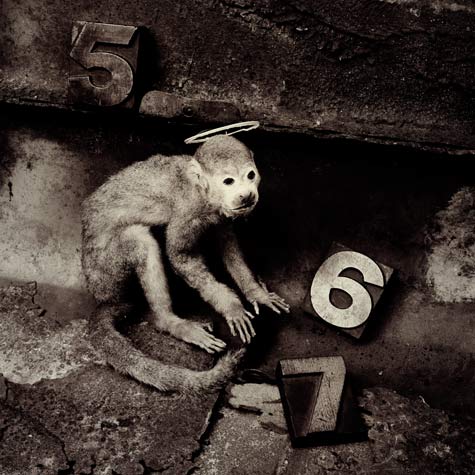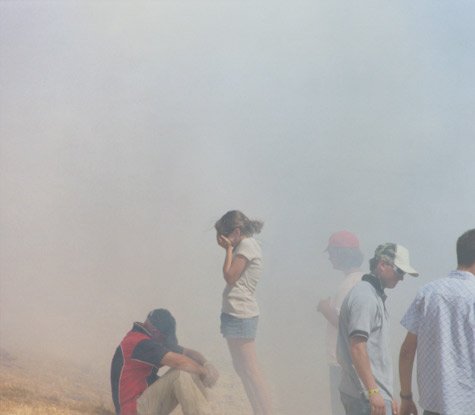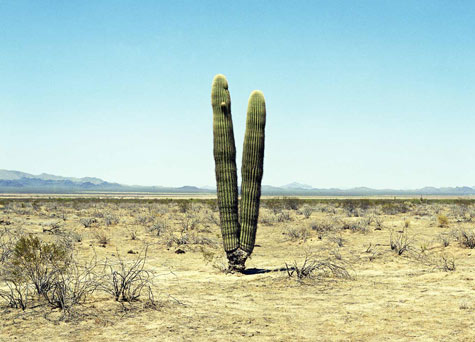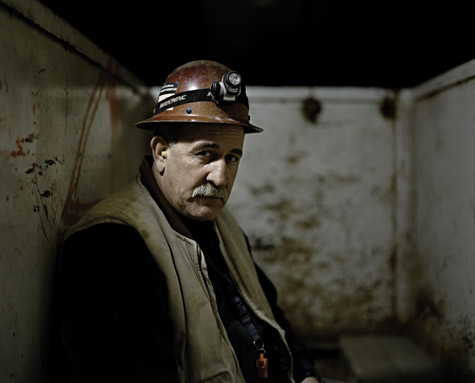
At the Sotheby's auction preview this week I met Beth Iskander, VP of Photographs. We knew we'd met before and realized it was 18 years ago when Beth took me on a tour of the Life magazine archives. I remember seeing the Liz Taylor files and thinking how wonderful it must have been when you got to spend a whole day, and sometimes longer, with a subject, and how few outlets were running full photo spreads any more. 18 years later I launched aCurator magazine with the hope of giving photographers the opportunity to see a whole spread of their work again.
JFK by Yousuf Karsh, cover by Life.
View the feature.
"The sun had set and the sky was a strange electric blue; here was just an empty patch by the shores of Lake Michigan, a small pier, a grove of trees shuddering in the wind under a glaringly bright streetlight, and a nondescript park building. It was November, and as the Chicago wind picked up, it was a challenge to keep my fingers warm enough to work my wooden field camera. I set up the equipment on that cold shore, and made a long exposure, encapsulating the icy nothingness that represented the approximate location where the largest pavilions of the Columbian Exposition of 1893 - the Agriculture Building and the Manufacture & Liberal Arts Building - had once stood.
My current body of work is an examination of how the sites and structures of world's fairs - conceived and built for a temporary, specific purpose - interact in today's unforeseen environment. Some of the most important architects of the 19th and 20th century were commissioned to construct fair pavilions, dazzling, unusual structures incorporating the most cutting-edge materials and engineering prowess possible at the time. Among them are McKim, Mead, and White, Louis Sullivan, Gustave Eiffel, Le Corbusier, Ando, Mies Van der Rohe, and the landscaping of Frederick Law Olmstead.
Tragically, these extraordinary structures are often immediately demolished, reappropriated for far less grand ambitions, or simply neglected. There is a seeming arbitrariness to what survives. In Philadelphia, two of the four remnants from 1876 are fair toilet buildings. In Paris, there are national icons such as the Eiffel Tower, the Grand Palais, and the Palais de Tokyo. In Flushing Meadows Park of New York, Philip Johnson's New York State Pavilion of 1964 sits in sad decrepitude, its stocky concrete support columns chipped and covered in ivy. I became entranced with the fantastical buildings overgrown with weeds, often neglected and ill-fitting among the sleek, modern high-rises looming around them. I use time of year and day - as well as a lush or stark color palette - to further convey the atmosphere of these sometimes-ghostly sites."
Read the rest of Jade's statement.
New York 1964 World's Fair, "Peace Through Understanding," Airplane, 2009 © Jade Doskow

The
Martin Luther King Memorial Organization is making a final push to reach their goal of a national monument:
"This month of April marks the 42nd anniversary of the death of Dr. King and we are commemorating his life and work by creating a memorial in our nation's capital. The Washington, DC, Martin Luther King, Jr., National Memorial will honor his life and contributions to the world through non violent social change. I've put together this
micro-site to help get the message out - there are videos, photos, banners, and even a web toolbar that, when used, donates money to the creation of the memorial."
Dr. Martin Luther King Jr., 1962 © Yousuf Karsh
 View the feature
View the feature.
Snap Galleries, specialists in rare and exclusive music photography, are hosting a
retrospective exhibition for acclaimed photographer
Simon Larbalestier in April 2010. The exhibition brings together, for the first time anywhere in the world, two distinct yet complementary bodies of work by Larbalestier: historic studio based photographs that appeared on Pixies record sleeves from the 1980s and 90's, and new images created in South East Asia in 2008/9 specifically for the Pixies' box set project, Minotaur.
"Decay, isolation and the visual impression of time ravaged objects
were key elements in Larbalestier's work, and photographs from this
early period were created using what Larbalestier describes as his
'scientific approach'. This was characterized by elaborately staged
sets, where images were shot mainly on black and white film on large
static cameras, and then sepia toned later in the darkroom to add
feeling and atmosphere. Early work such as Come on Pilgrim and Surfer
Rosa were shot on Polaroid type 55 film, which yields both a positive
print and a negative image that can be used in an enlarger. The
distinctive patterned borders of type 55 film served to heighten the
sense of decay and otherworldliness." - Guy White, Director, Snap.
The entire exhibition, with supporting commentary from Simon, is also being released as an iPhone and iPad app.
Snap Galleries Press release.pdf Monkey Gone to Heaven, from 'Doolittle' © Simon Larbalestier
Really wonderful news out of the UK, our fellow community of shouty photographers has managed to defeat Clause 43 of the Digital Economy Bill - it was to be a hideously vague orphan works clause. Back in the 80s, Boy George cut a track called "No Clause 28" - it was about a rather different issue - 'promoting' homosexuality - but the tune's been in my head as the Brits fought this from being washed through parliament without fair hearing. I haven't read the details yet but I'm ready to celebrate anyway.
Updated update: more details
Stop 43 Boy George © Janette Beckman
Rob Hann is an English photographer who has been living in the US for several years. He and I share a love of the deserts out west.
"The deserts of the American West hold a particular fascination for me. Born and raised in England's green and pleasant land, I've lived in busy, crowded cities since my late teens. The vast open spaces of the West are a place of silence, wonder and mystery. I like to get lost there whenever I can." - Rob Hann
Gina LeVay went 800 feet beneath New York City on several occasions, to document the creation of the city's third water tunnel.
Excavation of the 60 mile long City Water Tunnel 3 began in 1970 and will soon be complete. In 2003, Gina LeVay set her mind to photographing the men who are completing this dangerous project.
The men, known as
Sandhogs, are sometimes second and third generation tunnelers. Gina patiently gained their trust over several months before beginning to shoot, and proved her professionalism and gained their confidence. After her initial liaisons with the City, she began to gain access to the site through the workers.
Few New Yorkers even know about this mammoth excavation, or the story of the Sandhogs themselves, yet just as with so many of our large city projects there are tragic consequences - for each mile tunneled, approximately one Sandhog has lost his life in a mining-related accident.
Jim McCluskey, 3rd generation hog of 35 years, 2006 © Gina LeVay
Birthplace of Mike Tyson, Riddick Bowe, Zab Judah and other established fighters, Brownsville, Brooklyn has been home to boxing since the 30's, when it was the local Jews doing the brawling.
Throughout her career,
Janette Beckman has been in what many of us might find to be challenging situations. She photographed the mods and rockers, the punks, the rappers; riotous gigs, Ice T and Slick Rick with guns, Boo-Yaa T.R.I.B.E. and Wu Tang Clan, to reference a few more unnerving subjects. Here is her account of her night at Girls' Fight Club shooting stills while a camera crew filmed a documentary.
"One cold December night I went to Brownsville, Brooklyn (considered the murder capital of New York) to take some photographs with a film crew who were making a documentary about an underground illegal female fight club. We arrived at the secret location, a dark deserted street under the elevated train track where a hundred or so young men and women from the adjacent housing projects had gathered inside a windowless garage surrounded by barbed wire. Two locals acting as security frisked everybody for weapons. As soon as the last person had entered, the bouncers bolted the metal door shut. No one is allowed to leave until the event is done.
Inside the building is a boxing ring stained with dried blood from previous fights. Standing in the ring, two young women dressed in street clothes and wearing martial arts training gloves were punching the frigid air. The noise inside the garage is unbelievably loud, people shouting, making bets, greeting friends, and when the fight begins the crowd goes crazy.
I'll admit to being intimidated by the scene - being locked into a building in the middle of one of New York's most dangerous 'hoods with a bunch of hard looking characters drinking, smoking weed, giving gang signs; tough looking girls in hoodies checking me out, pit bulls tied up in the corner. I had no choice but to pick up the camera and shoot.
In the coming weeks I followed the film crew to shoot the girls at home, a kid's birthday party, met families and friends - grandmothers, mothers, fathers, sons - it was the most amazing project I worked on all year." - Janette Beckman
The documentary 'Brooklyn Girls' debuted on the BET channel.
 View the feature.
View the feature.aCurator is proud to support
Aperture Foundation.
"Aperture Foundation is a non-profit arts institution dedicated to promoting photography in all its forms, and as part of our ongoing mission to support the work of emerging photographers, Aperture is presenting an exhibition featuring the work of Australian photographer
Michael Corridore, winner of the 2008 Aperture Portfolio Prize, at Aperture Foundation. Part of a new initiative, these prints are available for sale, with the proceeds benefiting both the artist and the Aperture Foundation Emerging Artist Fund.
In the words of Aperture book publisher Lesley A. Martin, 'Corridore's project, Angry Black Snake, is an exercise in minimalism. Each image has been pared down to the barest of elements--urgent gestures and hardly traceable figures cloaked in smoke and dust. Yet each image pulses with palpable emotional tension, telegraphed by these starkest of representational sketches and the subtle shifting colors of the clouds that descend upon each scene like a flimsy curtain.
'As Corridore describes it, the project began as part of a larger portrayal of spectators at various events, including auto races, but became increasingly focused on those few moments where the event and the landscape in which it takes place come into direct and violent contact, for all intents and purposes eliding the spectator from the scene almost entirely. Car race or apocalyptic collision, the true nature of these events is never fully disclosed. Behind the scrim of kicked up particulate matter, however, it's evident that there is something afoot. The few discernible figures raise their arms - in victory, or perhaps to call out in distress; eyes are covered or screened for a better view. The work is remarkable for its use of restraint as a strategy to immerse the viewer in an indecipherable yet tangible Sturm und Drang.'
This year's winner, Alexander Gronsky, and the runners up can be viewed
here, and Corridore's prints can be purchased
here.
An exhibition of the winning series will be organized for 2011. Exclusive limited-edition photographs will be made available by Aperture. The purpose of the Prize is to identify trends in contemporary photography and specific artists who we can help by bringing their work to a wider audience. In choosing the winner, we are looking for work that is fresh and hasn't been widely seen in major publications or exhibition venues. The deadline for the 2010 Aperture Portfolio Prize is Wednesday, July 14, 2010."
From "Angry Black Snake" © Michael Corridore

"After many months of raising mantises I realized I didn't know a male from a female. I found an obscure pamphlet published in England thirty years ago by a couple whose hobby was raising praying mantises. To determine the boys from the girls you do the obvious: look under their skirts. You lift up the wings and count the segments on their abdomens. Males have eight and females six. After the last molt, you wait three weeks, heat the male up to 80 degrees, and put them together in a big space. They also said that if the female was well fed, she was less likely to eat him. But, it's not just a matter of male as meal. When she bites his head off she gets more sperm, according to one study I read.
The male was very cautious approaching the female. The female, for the most part, ignored him. He did most of the courtship. I thought of insects as having instantaneous sex. I stood there, camera ready, thinking it would be over in a flash. But not so with the praying mantis. They can stay coupled for hours. All my males got away unscathed, except one. After hours of being joined together she reached around, grabbed him by the neck and bit his face off. It took her another couple of hours to eat almost every last bit of him." - Catherine Chalmers
I implore you to not miss reading the absolutely compelling text and entertaining audio interviews with Catherine from This American Life and Studio 360, via her
website.
Read the
previous entry on Catherine for more about her Food Chain project.
 At the Sotheby's auction preview this week I met Beth Iskander, VP of Photographs. We knew we'd met before and realized it was 18 years ago when Beth took me on a tour of the Life magazine archives. I remember seeing the Liz Taylor files and thinking how wonderful it must have been when you got to spend a whole day, and sometimes longer, with a subject, and how few outlets were running full photo spreads any more. 18 years later I launched aCurator magazine with the hope of giving photographers the opportunity to see a whole spread of their work again.
At the Sotheby's auction preview this week I met Beth Iskander, VP of Photographs. We knew we'd met before and realized it was 18 years ago when Beth took me on a tour of the Life magazine archives. I remember seeing the Liz Taylor files and thinking how wonderful it must have been when you got to spend a whole day, and sometimes longer, with a subject, and how few outlets were running full photo spreads any more. 18 years later I launched aCurator magazine with the hope of giving photographers the opportunity to see a whole spread of their work again.








